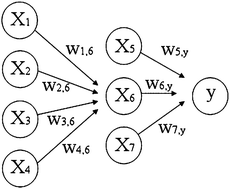Artificial neural networks (ANNs) have proven to be a tool for characterizing, modeling and predicting many of the non-linear hydrological processes such as rainfall-runoff, groundwater evaluation or simulation of water quality. After proper training they are able to generate satisfactory predictive results for many of these processes. In this paper they have been used to predict 1 or 2 days ahead the average and maximum daily flow of a river in a small forest headwaters in northwestern Spain. The inputs used were the flow and climate data (precipitation, temperature, relative humidity, solar radiation and wind speed) as recorded in the basin between 2003 and 2008. Climatic data have been utilized in a disaggregated form by considering each one as an input variable in ANN1, or in an aggregated form by its use in the calculation of evapotranspiration and using this as input variable in ANN2. Both ANN1 and ANN2, after being trained with the data for the period 2003–2007, have provided a good fit between estimated and observed data, with R2 values exceeding 0.95. Subsequently, its operation has been verified making use of the data for the year 2008. The correlation coefficients obtained between the data estimated by ANNs and those observed were in all cases superior to 0.85, confirming the capacity of ANNs as a model for predicting average and maximum daily flow 1 or 2 days in advance.

You have access to this article
 Please wait while we load your content...
Something went wrong. Try again?
Please wait while we load your content...
Something went wrong. Try again?


 Please wait while we load your content...
Please wait while we load your content...